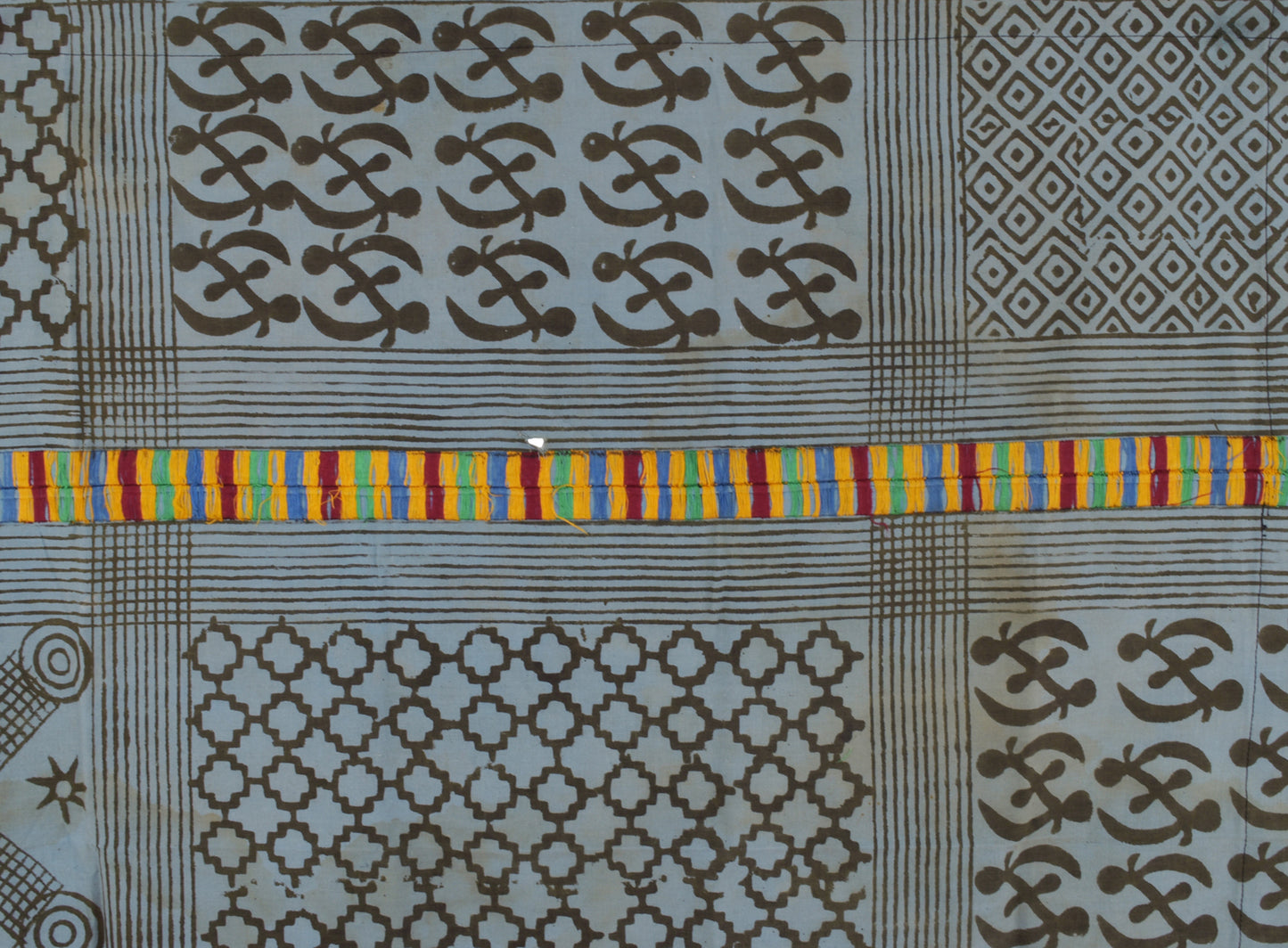Tribalgh
Vintage Hand Stamped Adinkra Cloth 55″×37½″ – Authentic 1970s Ghana
Vintage Hand Stamped Adinkra Cloth 55″×37½″ – Authentic 1970s Ghana
Item number:
SKU:SD-31101
Check shipping cost
Check shipping cost
Standard shipping cost for this item is $ 9.95
Insured "AIR MAIL" anywhere in the world.
Delivery time for Europe is 7-14 working days.
Delivery time for USA and the rest of the World is 14-21 working days.
We combine shipping on multiple purchases!
DHL option available for faster delivery ( 2 - 4 working days ) to all over the world.
During your checkout you will be able to see cost and select DHL option.
FREE upgrade to DHL for orders over $ 200
Couldn't load pickup availability
Hand stamped Adinkra cloth – Vintage 1970s “Woman” Size – 55″ × 37½″
This stunning Hand stamped Adinkra cloth dates from the 1970s and is in good condition, exhibiting the rich authenticity of Ashanti, Akan tradition.
- Size: 55″ × 37½″ (139 cm × 95 cm)
The cloth is hand painted, hand embossed, embroidered together, and stamped throughout with various Adinkra symbols. It shows signs of age: some stains, light wear, and a small tear (see photo 4). Please review photos carefully.
Included with the cloth are free shipping for each additional Adinkra block you order.
Stamping process and materials
Adinkra stamping blocks are carved from the bottom of a calabash (a dried gourd). Each block has a handle on the back and is slightly curved. The stamp is applied with a rocking motion after dipping into natural dye made from the bark of the “badie” tree.
The artist used multiple Adinkra symbol stamps to compose the beautiful design on this cloth.
Enjoy the enduring elegance and cultural depth of this vintage Adinkra cloth.
About Adinkra cloths, symbols, tradition, and history
What are Adinkra cloths? Adinkra cloths originate from the Akan and Ashanti people of Ghana. They have been produced for centuries and were historically worn by royalty, chiefs, and fetish priests during funerals and important ceremonies. These pieces are now embraced by anyone as ceremonial garb or cultural wear.
What are Adinkra symbols and what do they mean? Adinkra symbols are ideographic designs that convey philosophical, moral, and historical messages. Each symbol carries deep meaning, such as strength, wisdom, unity, or patience.
Symbolic meanings of colors and materials Adinkra cloth colors and materials often emphasize tradition. Dark brown or black dye from the badie bark is used for solemnity and respect. Cloths are made from cotton, hand stamped rather than hand woven, emphasizing artisanal craftsmanship.
How Adinkra stamps were made and used Stamps are carved by hand into dried calabash, creating slightly curved structures for efficient dye transfer. The rocking application ensures smooth printing.
Social and ritual use among the Ashanti people Adinkra cloths featured prominently in funerals and royal ceremonies. The patterns communicated respect, mourning, and social status. Today, Adinkra cloths serve both ceremonial and decorative roles on special occasions for all.
History of Adinkra cloth in Ghana Legend credits Nana Kofi Adinkra, a Gyaman king, with the origin of Adinkra cloth. After losing a battle with Ashanti King Bonsu‑Panyin, Adinkra was captured and taken to Kumasi. His sorrowful patterned cloth became a symbol of emotion and storytelling. Over centuries the craft evolved, maintaining its cultural power and relevance.
Note that this cloth is hand‑stamped, not hand‑woven, underscoring its artisanal nature and authentic connection to Ghanaian craft traditions.
Explore more from TribalGH:
Share








